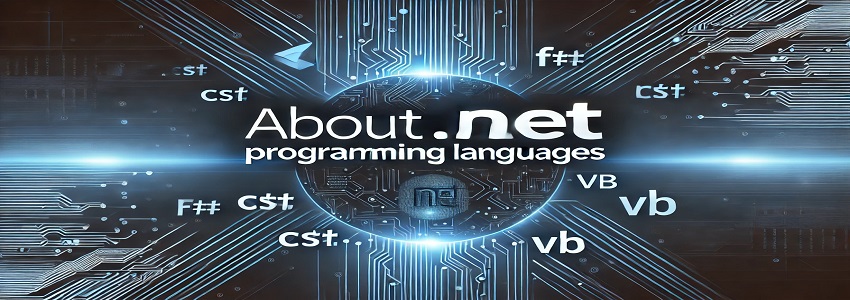The .NET ecosystem supports several programming languages, each with its own strengths and use cases. Here are some of the primary .NET programming languages:
1. C# (C-Sharp)
-
Overview: C# is the most widely used programming language in the .NET ecosystem. It is a versatile, object-oriented language designed for building a variety of applications, from web to desktop to mobile.
-
Key Features:
-
Strongly typed
-
Modern and expressive syntax
-
Support for asynchronous programming
-
LINQ (Language Integrated Query) for data manipulation
-
Extensive standard library
-
2. Visual Basic .NET (VB.NET)
-
Overview: VB.NET is an object-oriented programming language derived from the original Visual Basic. It is designed to be easy to learn and use, making it a popular choice for beginners and for building Windows-based applications.
-
Key Features:
-
Strongly typed
-
Rich set of built-in functions
-
Easy-to-read syntax
-
Compatibility with older Visual Basic code
-
Extensive support for Windows Forms and WPF
-
3. F# (F-Sharp)
-
Overview: F# is a functional-first programming language that also supports object-oriented and imperative programming. It is particularly well-suited for tasks involving complex data analysis, mathematical computations, and parallel programming.
-
Key Features:
-
Functional programming paradigm
-
Concise and expressive syntax
-
Strong type inference
-
Asynchronous workflows
-
Interoperability with C# and other .NET languages
-
4. C++/CLI (Common Language Infrastructure)
-
Overview: C++/CLI is an extension of C++ that allows developers to write .NET applications. It is primarily used for interop scenarios where existing C++ code needs to interact with .NET components.
-
Key Features:
-
Combines the power of C++ with .NET
-
Seamless interop with native and managed code
-
Access to .NET libraries and runtime
-
5. IronPython
-
Overview: IronPython is an implementation of the Python programming language targeting the .NET Framework and Mono. It allows developers to write .NET applications using Python syntax and libraries.
-
Key Features:
-
Dynamic language
-
Interoperability with .NET libraries
-
Access to Python's extensive standard library
-
Suitable for scripting and rapid application development
-
6. IronRuby
-
Overview: IronRuby is an implementation of the Ruby programming language for the .NET Framework. It enables developers to write .NET applications using Ruby syntax and libraries.
-
Key Features:
-
Dynamic language
-
Interoperability with .NET libraries
-
Access to Ruby's rich ecosystem of gems
-
Suitable for web development and scripting
-
Conclusion
These languages offer a range of options for developers working in the .NET ecosystem, allowing them to choose the language that best fits their project requirements and personal preferences. Each language is designed to leverage the power of the .NET runtime and libraries, enabling the creation of robust and scalable applications.



